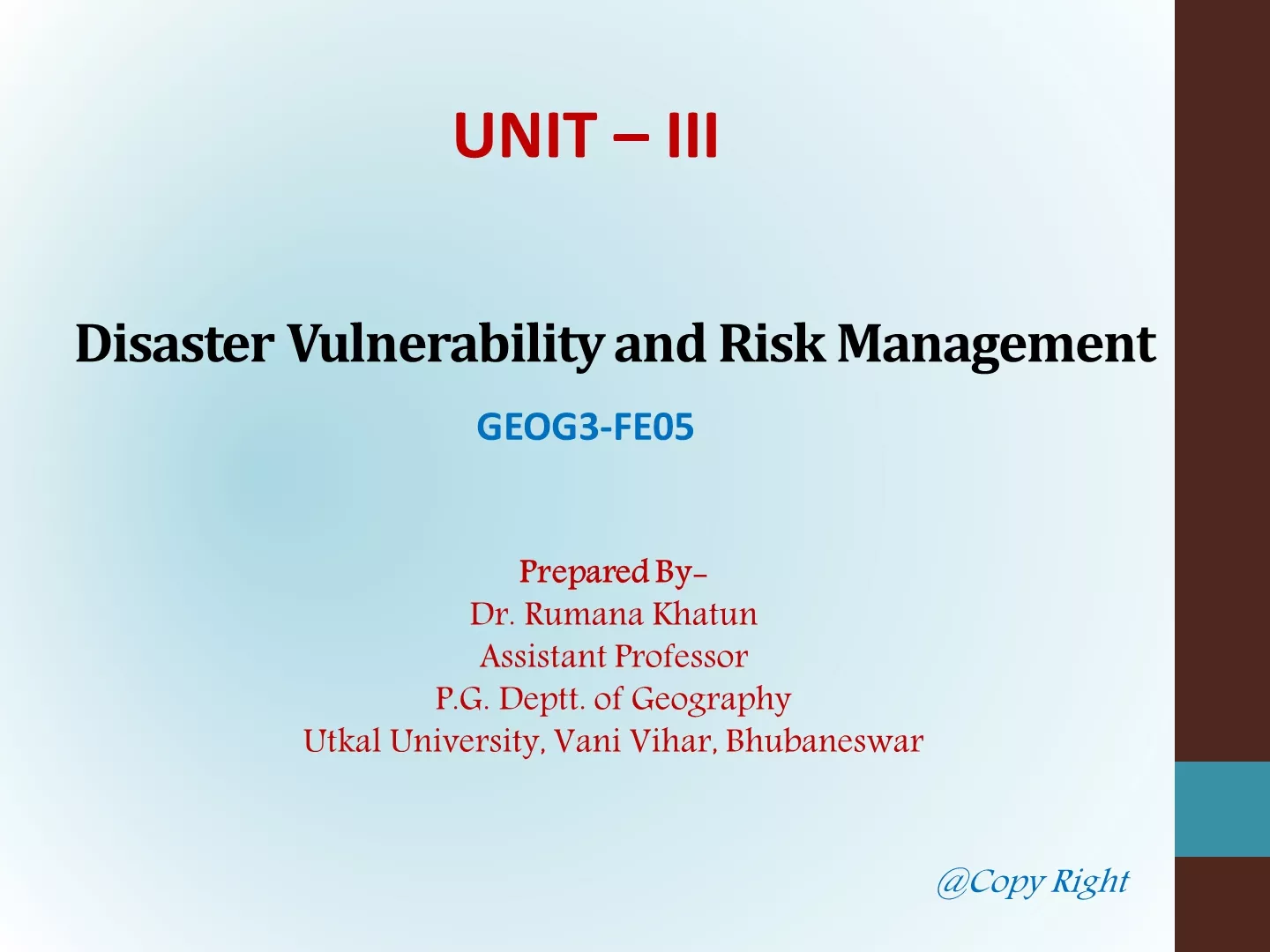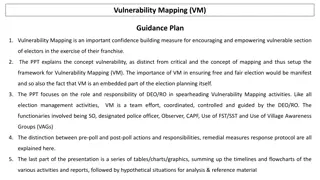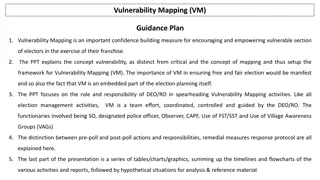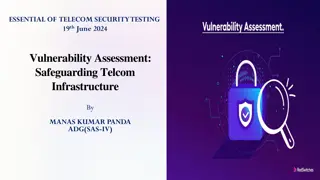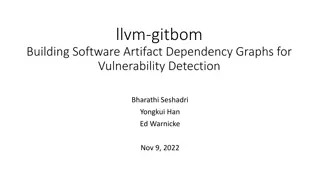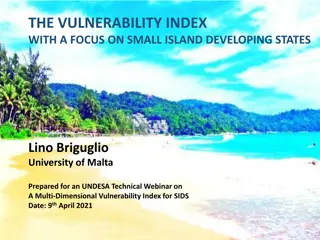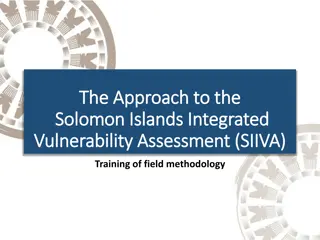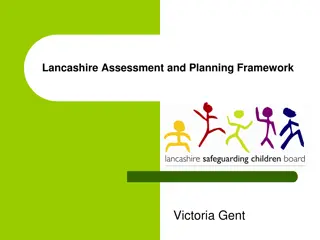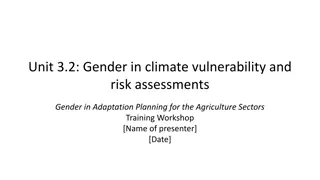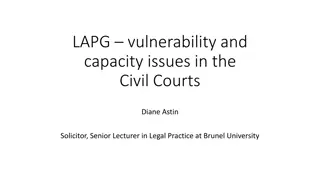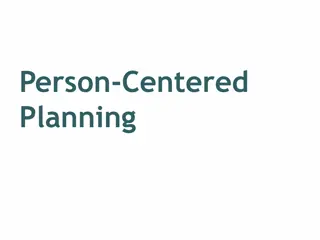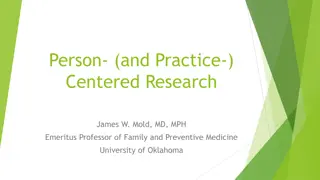Enhancing Child-Centered Approaches in Vulnerability Assessment
Gain insights on prioritizing children's voices, thoughts, and feelings when working with vulnerable populations. Learn about effective communication, observing interactions, and involving significant individuals in a child's life for comprehensive assessments and successful interventions.
Download Presentation

Please find below an Image/Link to download the presentation.
The content on the website is provided AS IS for your information and personal use only. It may not be sold, licensed, or shared on other websites without obtaining consent from the author.If you encounter any issues during the download, it is possible that the publisher has removed the file from their server.
You are allowed to download the files provided on this website for personal or commercial use, subject to the condition that they are used lawfully. All files are the property of their respective owners.
The content on the website is provided AS IS for your information and personal use only. It may not be sold, licensed, or shared on other websites without obtaining consent from the author.
E N D
Presentation Transcript
DCI Gary McIntyre Greater Manchester Police Lead for Vulnerability Rochdale, Tameside, Oldham
When working with children or young people it is essential to gain a clear picture of their wishes, thoughts and feelings. It is good practice to ask the child or young person which practitioner they would like to gather this information from them. The right of a child or young person to be heard is included in the UN Convention of Rights the Children s Act 2004 emphasises the importance of speaking to the child or young person as part of any assessment.
Child focused work means children feel listened to, plans are more successful. This does not only refer to what children say directly, but to many other aspects of their presentation. It means seeing their experiences from their point of view. Children are trying to tell us something No child is too young to have a voice Children feel listened to and heard We can see their experiences from their point of view When children are involved interventions are more successful when they are involved and prompt decisions are made about safeguarding when necessary
Its a wider observation of what the child, the environment and the other people present are communicating to you. It includes: Non-verbal communication (remember only 7% of communication is verbal) What is the child not saying? How do they look? How do they behave? Observations of interactions between the adults and the child What is the physical environment? Build up a picture of the child s life.
observe the interactions between a child and their parents or carers is there any difference in their interactions with other people describe the child s interactions with professionals ensure you include the views of other significant people in the child s life who may have contributions to make about the child s experiences include the views of fathers; they may have useful information to share, even if there are concerns about them use independent advocates to ascertain children s views as sometimes they can bring valuable context to children s experiences
Vigilance: Understanding and action: to understand what is happening, to be heard and understood, and to have that understanding acted upon Stability: with those helping them Respect: rather than not Information and engagement: procedure, decisions, concerns and plans Explanation: decisions and reasons when their views have not met with positive response Support: member of the family Advocacy: forward their views Vigilance: to have adults notice when things are troubling them Stability: To be able to develop ongoing stable relationship of trust Respect: to be treated with the expectation that they are competent Information and engagement: to be informed about and involved in Explanation: to be informed of the outcome of assessments and Support: to be provided with support in their own right as well as a Advocacy: to be provided with advocacy to assist them in putting
Victoria Climbi Victoria was known to no less than two further housing authorities, four social services departments, two child protection teams of the Metropolitan Police Service (MPS), a specialist centre managed by the NSPCC, and she was admitted to two different hospitals because of suspected deliberate harm. The dreadful reality was that these services knew little or nothing more about Victoria at the end of the process than they did when she was first referred to Ealing Social Services by the Homeless Persons Unit in April 1999. (Laming Report 2003) Daniel Pelka Almost every child who has been the subject of a serious case review over the last 40 years was 'seen' by a professional within days (or hours) of their death. Simply seeing a child is not protection against harm. The child needs to be seen, listened to and heard. Treat parents and carers with respect and listen to their information, but always verify the information that they provide via other sources. (Daniel Pelka Serious Case Review Report 2013)


